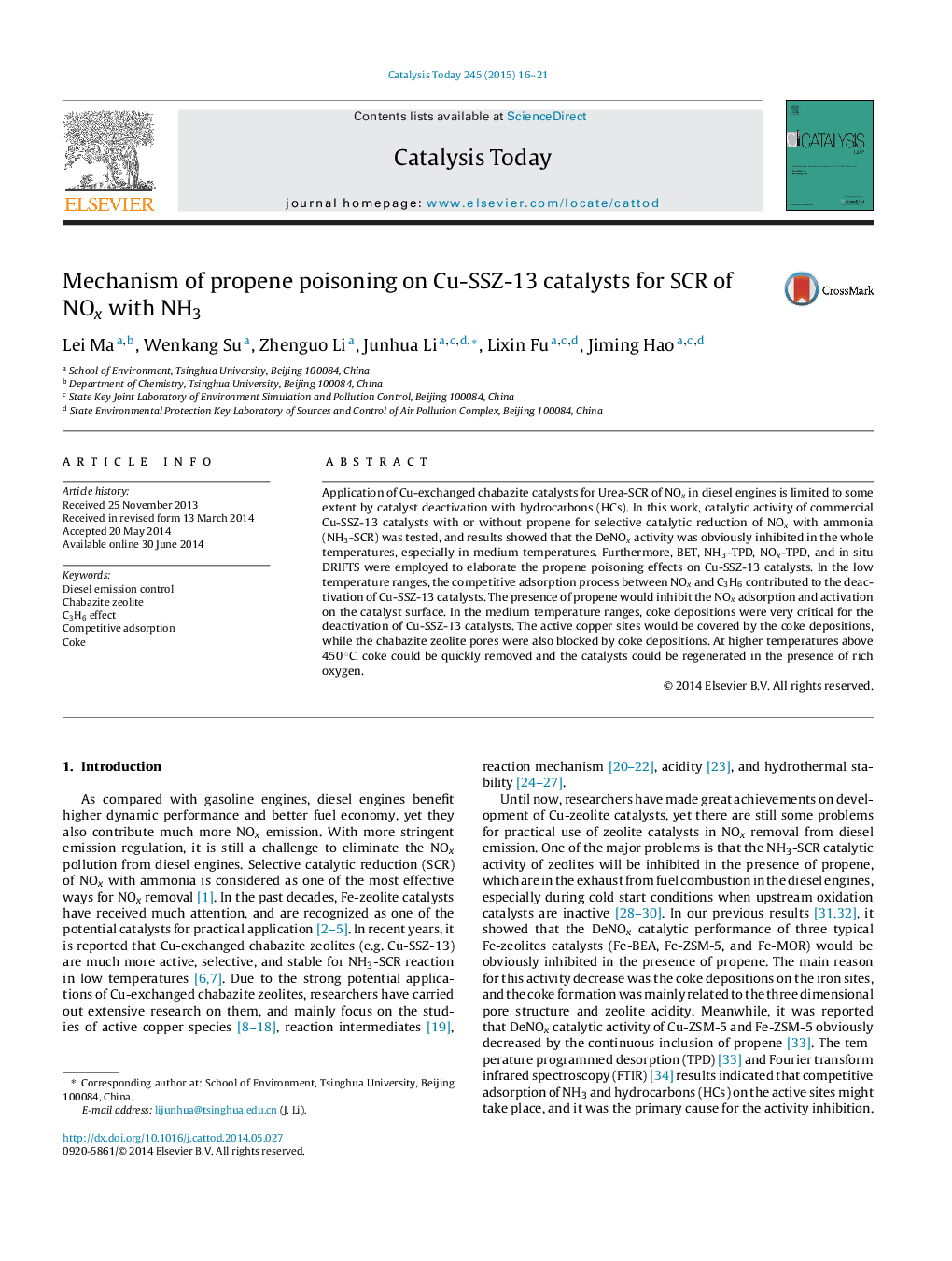| Article ID | Journal | Published Year | Pages | File Type |
|---|---|---|---|---|
| 54034 | Catalysis Today | 2015 | 6 Pages |
•Catalytic activity of Cu-SSZ-13 is obviously inhibited by C3H6 in the whole temperature ranges.•Competitive adsorption between NOx and C3H6 is the main factor for Cu-SSZ-13 deactivation in low temperature ranges.•Coke depositions contribute for Cu-SSZ-13 deactivation around 350 °C.•Cu-SSZ-13 catalysts can be regenerated above 450 °C in rich oxygen.
Application of Cu-exchanged chabazite catalysts for Urea-SCR of NOx in diesel engines is limited to some extent by catalyst deactivation with hydrocarbons (HCs). In this work, catalytic activity of commercial Cu-SSZ-13 catalysts with or without propene for selective catalytic reduction of NOx with ammonia (NH3-SCR) was tested, and results showed that the DeNOx activity was obviously inhibited in the whole temperatures, especially in medium temperatures. Furthermore, BET, NH3-TPD, NOx-TPD, and in situ DRIFTS were employed to elaborate the propene poisoning effects on Cu-SSZ-13 catalysts. In the low temperature ranges, the competitive adsorption process between NOx and C3H6 contributed to the deactivation of Cu-SSZ-13 catalysts. The presence of propene would inhibit the NOx adsorption and activation on the catalyst surface. In the medium temperature ranges, coke depositions were very critical for the deactivation of Cu-SSZ-13 catalysts. The active copper sites would be covered by the coke depositions, while the chabazite zeolite pores were also blocked by coke depositions. At higher temperatures above 450 °C, coke could be quickly removed and the catalysts could be regenerated in the presence of rich oxygen.
Graphical abstractFigure optionsDownload full-size imageDownload high-quality image (113 K)Download as PowerPoint slide
